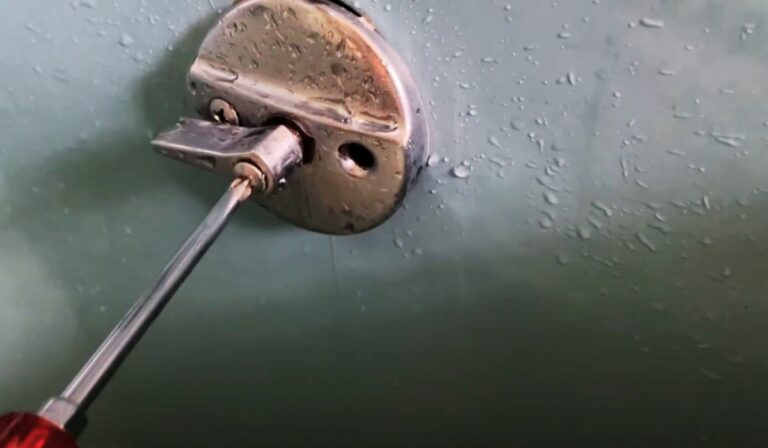Tub Spout and Connection Types: All You Need to Know!
Changing or adding a tub spout is a common thing a homeowner does. But it gets confusing if you don’t know the types of spout and connection.
Well! Based on the material, style, and length, you’ll find different tub spout types in the shop. For example:
Don’t worry if the above statement seems puzzling. In this guide, I’ll explain this topic in detail and share spout connection types. You’ll also learn how to pick one and identify the spout type here. Stay Tuned!
Types of Spouts that Are Used in Bathtubs!
It’s vital to know what are the different types of tub spouts available if you’re thinking of getting one. Let me break down tub spout types below:
1. Material
If looking into the material, you’ll find 2 types of tub spouts that are metallic and non-metallic. To begin with, the metallic tub spouts are built out of metal (steel, aluminum, brass, nickel, and so on).
Thanks to the construction, they are more durable, stable, and long-standing. However, metallic spouts are costly compared to non-metallic tub spouts.
On the other hand, the non-metallic ones are made from synthetic, diecast zinc, or plastic material. And they are mostly less reactive to chemicals or germs in the water and easy to maintain.
2. Style or Function
From the viewpoint of function, there are 2 kinds of tub spouts: diverter and non-diverter. Both hold visible differences if you put them side by side.
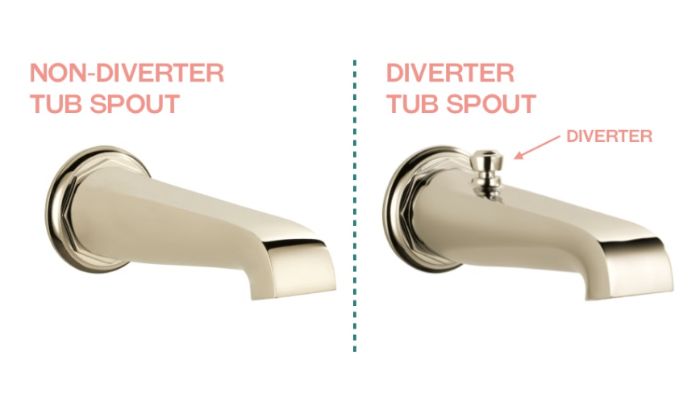
3. Length
All manufactured brands offer different lengths of tub spouts to fit into the copper pipe (that comes from the wall to hold the spout). To simplify it, you’ll find longer and smaller tub spouts ranging from 5.5″ – 9″ or more.
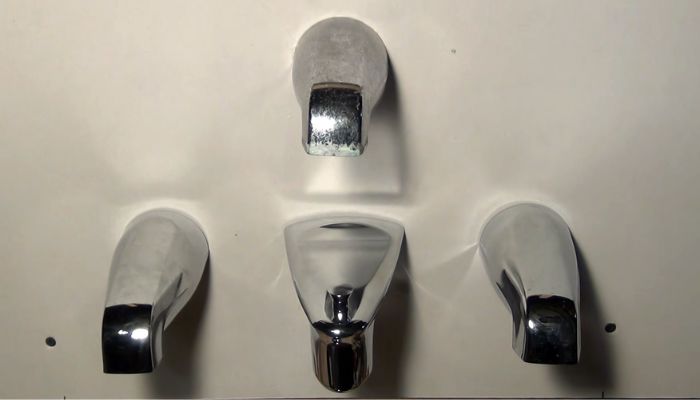
The good thing about the longer spouts is it lets you fill the buckets or water cans faster. Plus, they work great for folks who have long hair to wash it better.
Then again, the smaller tub spouts are fantastic as they take less space and no one will get bumps which often occur with longer spouts.
Types of Tub Spout Connections!
Just the part itself, there are two types of tub spout connections such as slip-fit and threaded ones. To know more about it, here’s the detail:
Slip On Type
These types of connections contain a set screw (a little screw) on the bottom of the spout. They are made to fit into a 1/2″ (1.27 cm) copper pipe with no need to use threads.
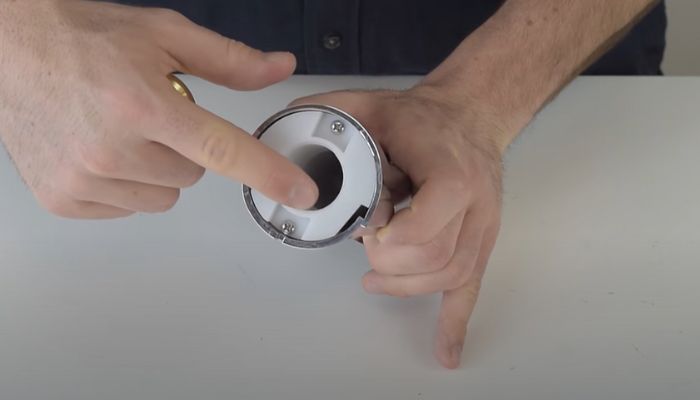
Note that the bottom of the copper pipe (used on the wall) is free from burrs or rough edges to use the slip-fit tub spout.
Threaded Type
These types of tub spouts don’t come with a set screw on the bottom of the spout’s body. You’ll find 3 kinds of threaded connections in the tub spout and these are:

How To Know What Type of Tub Spout You Have?
Choosing the Right Tub Spout Type!
- Go with a tub spout that matches your bathtub in terms of looks and design.
- Determine what features you need from the tub spout in terms of functionality. Decide whether you prefer a basic tub spout or one with extra functionalities to suit your specific needs.
- Select one that is durable, good in quality, reliable, and able to flow high water in both hot and cold states. For that, ensure to set a good budget!
- Based on your requirement, pick a tub spout with or without a diverter.
- Think of getting a tub spout that has a good finish (chrome, satin nickel, or oil-rubbed bronze).
- If your bathtub has enough space, opt for a long tub spout. Or else, select a small one.
- Consider the ease of installation and maintenance required for the tub spout. Be sure the tub spout you are picking is simple to install or replace.
- If water conservation is important to you, consider selecting a tub spout that is designed for water efficiency.
Frequently Asked Questions
How to identify the material of tub spout?
Tap the spout with a metal spoon. If you hear a clunking noise, then it’s a metallic spout. And a thud sound suggests a non-metallic one.
Are tub spouts with or without a diverter better?
It depends on your preference and needs. Diverter spouts allow water diversion to the showerhead. But non-diverter spouts don’t have this feature.
In Conclusion
After knowing all the types of tub spouts and their connection, this is the perfect time for you to pick one. Just ensure to follow the above tricks and get a proper size one that goes with your tub.
Hope this guide seems informative to you to know something new and interesting. And I’ll see you with another guide soon. Bye!

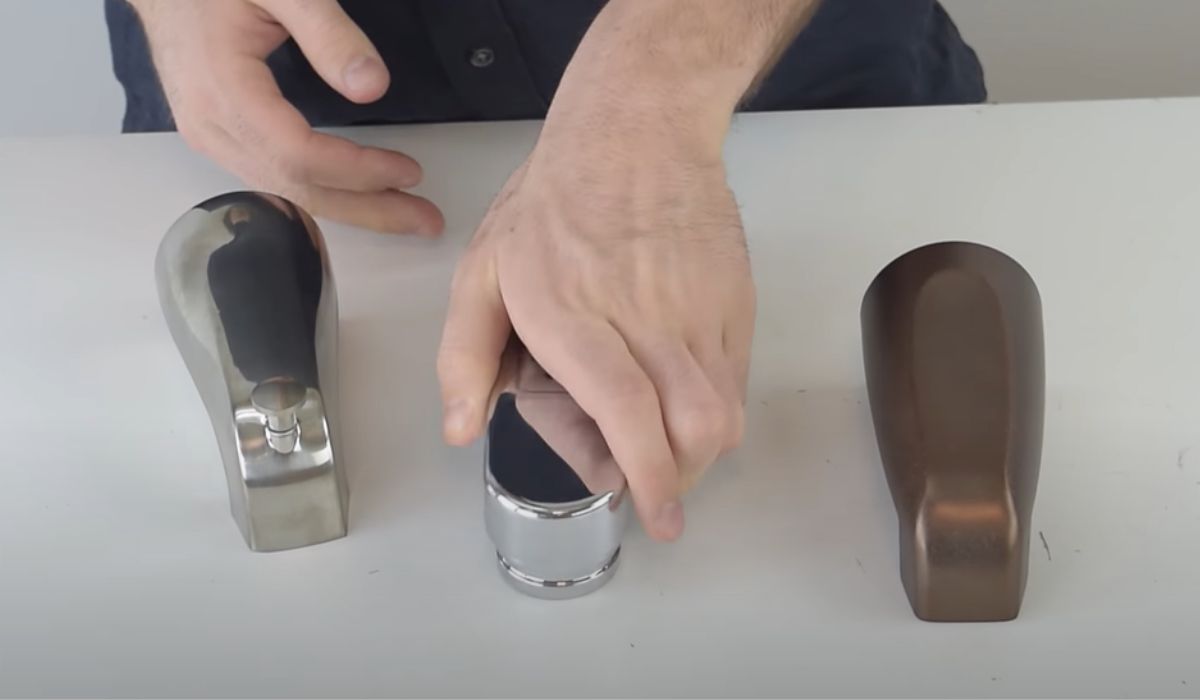
![How You Can Temporary Fix a Leaky Bathtub Faucet? [Solved]](https://faucetfam.com/wp-content/uploads/2023/07/Temporary-Fix-a-Leaky-Bathtub-Faucet-768x448.jpg)


